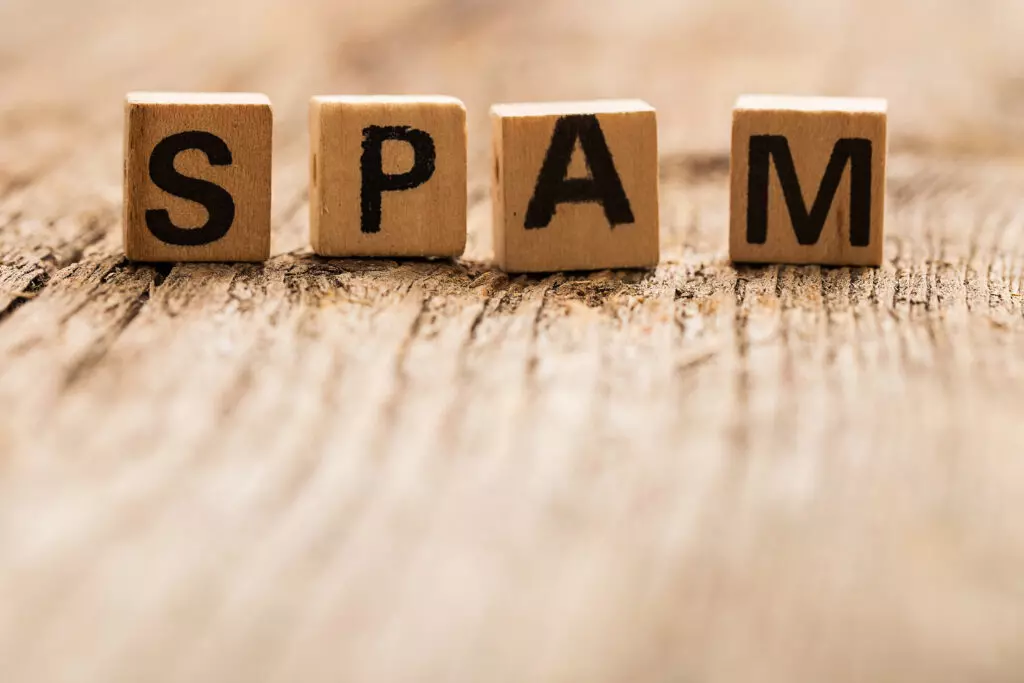Partner in Publishing • September 9, 2021 • 0 comments
WHEN YOUR EMAIL CAMPAIGN BECOMES A FOUR-LETTER WORD

Like most Americans in possession of a computer, I receive a lot of unwanted emails. My inbox is inundated with information as haphazard and as impotent as buckshot, and despite my best efforts, it keeps on coming. As a consequence, I ruthlessly delete, unsubscribe, and champion the anti-spam filter….but hang on, if that’s what I am doing to their email campaigns, is that what they are doing to mine?
Your email campaign may be the apple of your eye, but its true test really begins once you have pressed send. While there are a number of steps it has to complete before it can be realized into hard revenue, its first big hurdle is whether it can successfully make its way past the anti-spam filter and into your customers’ inbox. This success is not arbitrary. The anti-spam filter analyses the actions of recipients and unfortunately for you, this creates a snowball effect. If too many of the emails you send are either deleted without being opened, or immediately marked as spam email, then the filter is likely to preempt this action next time round.
The bottom line is that eye-catching email design and great copy are not enough to ensure the success of your email campaign. If you are wondering what is preventing your drip campaign emails from generating the activity you think they deserve, you need to understand where they are ending up, and why. To translate your email marketing strategy into revenue, you need to create positive customer engagement but without some diligent housekeeping at your end, this is hard to achieve. So, let’s look at what actions you can take to minimize your chances of landing on an email blocklist.
How to combat email fatigue
The root causes of email fatigue could not be simpler: irrelevant information sent too often. If you inundate your hard won customers with unrelated content, the only engagement you will track is the speed with which they unsubscribe, or mark you as spam mail and increase your chances of inclusion on an email blocklist. Segmenting your audience demonstrates an understanding of your customer base and will make your email marketing campaign more targeted and efficient. Dividing your target market into defined categories places customers into groups that share common themes; think interests, gender, or location etc. A segmented list makes it easier to personalize content: we want to build relationships, and recognizing your customers as individuals is a great place to start.
Let’s get personal!
Your list is segmented and you are now ready to consciously pair the message and the recipient – it’s time to get personal. This is your opportunity to leverage what you know about your consumer, because personalization increases open and click-through rates. When considering your email marketing strategy, don’t stop at the inclusion of names, though this is important, content must be relevant, the email must be timely (remember email fatigue), and it must come from you.
Scrubbing your email list
You have segmented your list, and personalized your emails, but your hit rate is still low. Now what? It may be time to accept the hard facts: if there is low engagement from your audience, then perhaps it’s not the right audience in the first place. Consumers who consider your content to be spam mail and mark them as such, are doing active harm, so rather than focusing on the amount of subscribers, focus on finding the right subscribers. Feedback from a smaller, engaged audience is much more valuable to you, and will help you gauge the effectiveness of your email marketing campaign. Scrubbing your list does not mean that you have to delete whole tranches of consumers, though you would do well to delete a portion, think of it as an exercise to identify the who, what, and when. Performing this discipline frequently will not only reduce your spam email complaints and unsubscribes, it will bolster your “sender” reputation and translate into more of your hard work landing on target: the inbox.
If you can’t beat them….join them?
It can be disappointing to learn that your drip emails have successfully navigated their way past the spam filter, only to end up in the promotions tab. Once there, the only way out is if the subscriber moves the message manually which requires your email to be of sufficient interest to warrant the action. The good news is that studies show that people do use the promotions tab, but the inbox remains our goal so let’s consider what other steps we can take to get there first time round.
- Warm up your email list. The importance of verifying your email list cannot be overstated to avoid a high bounce rate.
- Exercise caution as you increase the number of emails you send. Consider a test run. Use your friends. Where does your email land?
- Ask your customers to whitelist you and include clear instructions how to do that
- Minimize links and images – they are trademark promotion tactics
- Use plaintext – this should be a conversation between friends, so avoid gimmicks that raise a red flag
Email campaigns remain one of the most economical and effective ways to market and sell your product but you don’t have to go it alone. Partner in Publishing is here to offer you the support you need to create and deploy your email marketing campaigns. Call us today to learn more about partnering with PIP, supporters of the best and brightest in the EdTech space.
Ready to Partner with Industry Leaders?
Discover how we can help your EdTech brand grow and succeed.
Strategic Partnerships Start Here





